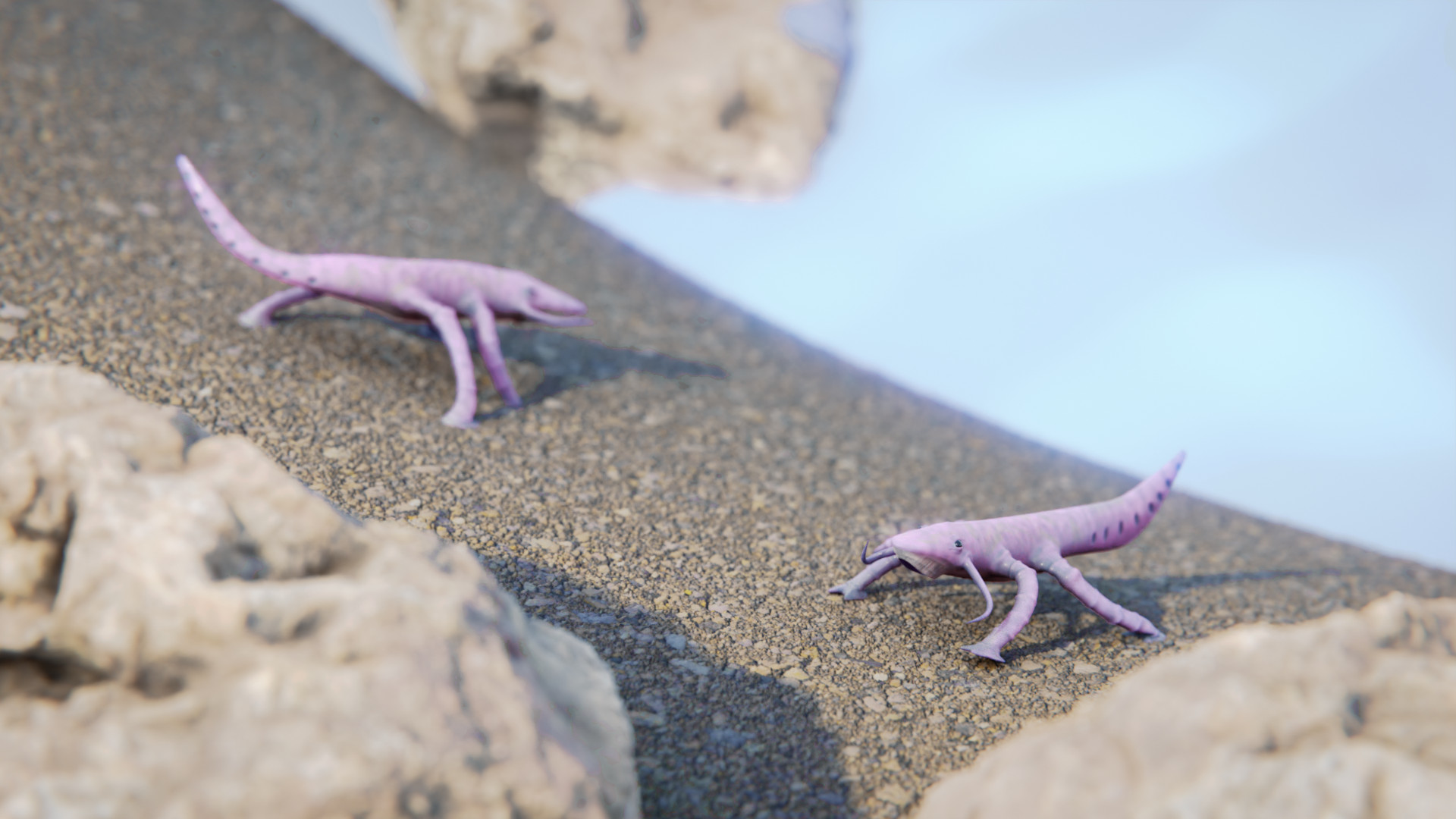Neróourá
Neróourá is closely related to the free swimming Nerópteron as they both have a gillcord supporting an internal gill system. Where they differ is their lifestyle and habitat. Neróourá is still a bottom feeder like it’s ancestor bobird though it has found its way into freshwater habitats as an amphibious herbivore. Its tail has adapted to bring water with it as it walks onto land to feed on soft retinalphytes or escape water bound predators. Its skin is vulnerable to desiccation so it must return to the water though the water it carries in its tail allows for a longer time on land then other amphibious creatures
Basic Information
Anatomy
Neróourá is a quadruped with sprawling limbs each foot has three fleshy toes two facing anteriorly and one posteriorly, this is likely to help the pseudotetropod as it walks through much more varied terrain.
Much like Nerópteron, Neróourá has a cartilaginous gillcord used to support the gills. Neróourá however, has an extra expansion on its gills, specialized bladders that can be filled with and store water. The exterior skin around the bladders is elastic and expands along with the bladders.
Its tail has several specialized skin flaps that will cover the respiratory system while outside of the water. This is primarily to protect the gills from desiccation by retaining the water in the bladders.
Neróourá has a jawless mouth and masticates retinalphytes using a specialized tongue that is very similar to a snail's radula. It is short and covered in cartilaginous teeth to rasp at retinalphytes through a vertical slit on the ventral side of its head.
Genetics and Reproduction
Neróourá practice sexual reproduction. After storms they will gather in slow moving water to breed. Males will compete for females with short wrestling matches, using their inflated tails to balance themselves and attract females. Females will lay their eggs and cover them with a glue like mucus so they attach to a rock and the male will then fertilize the eggs.
Growth Rate & Stages
Neróourá starts life as an egg that takes on average 28 local days to hatch. This leads into a larval stage that is completely aquatic and resembles the ancestral bobird due to its external gills. After 1 local year the gills will recede into the tail and become fully reliant on the gillcord. This form is still water bound and is referred to as a nymph. After another local year the bladders will fully form and the Neróourá is considered a full adult.
Ecology and Habitats
Neróourá can be found in the consistently moist landscapes of Yama, primarily the borders of ponds, swamps, lakes and slow moving streams.
Dietary Needs and Habits
Neróourá is a herbivore that specializes in soft retinalphyts.
Additional Information
Social Structure
Neróourá live solitary lives most of the year but tolerate the presence of other members of its own species.
Perception and Sensory Capabilities
The chemoreceptors on Neróourá are longer and more sensitive than the ancestral bobird’s. They have also developed a sensitivity to vibrations at the base allowing for it to hear more clearly. Neróourá’s eyes have not changed much due to the murky freshwater it lives in and around.
Remove these ads. Join the Worldbuilders Guild











Comments